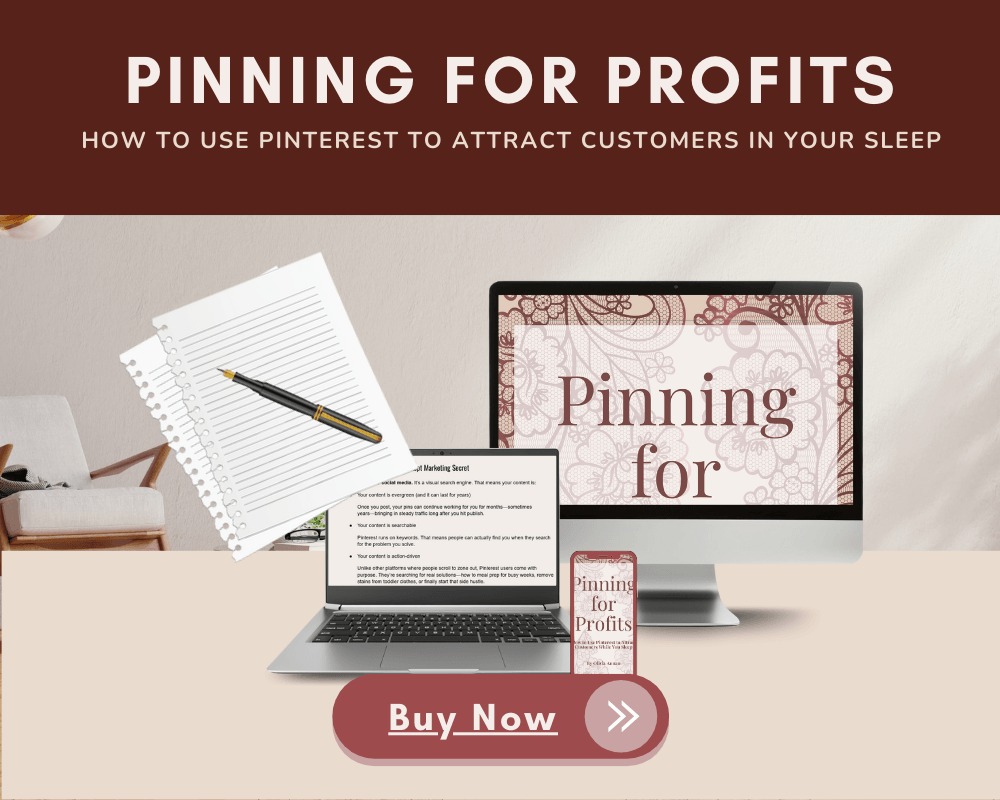How to Write a Nurture Sequence That Builds Trust, Connection & Sales
This site may contain links to affiliate websites, and we receive an affiliate commission for any purchase made by you on the affiliate website using such links. Our affiliates include the following: Fiverr. We are a participant in the Amazon Services LLC Associates Program, an affiliate advertising program designed to provide a means for us to earn advertising fees by linking to Amazon.com and Affiliated website.
Let’s Talk About the First Few Emails You Send After Someone Subscribes
You know that feeling when someone new joins your list and you're not quite sure what to say next?
You want to make a good impression… but you also don’t want to sound needy, awkward, or like you're just there to sell something.
You just want to be real and still move them toward trusting you enough to work with you or buy from you one day.
That’s exactly why your first few emails matter so much.
These early messages are your digital handshake. They’re what help someone go from curious to connected. And they often make such a difference. When they are first entering your world this is the time that the new subscriber is most likely going to open your emails.
This is where a nurture sequence comes in.
It’s simply a short series of emails you send after someone joins your list to help them settle in, understand who you are, and feel like they’re in the right place.
Having this set up on auto pilot will ensure that everyone gets to have the same experience, and you won't have to be keeping track manually of who is entering your list and when.
Don't worry, you don’t need to be a pro copywriter or marketing guru to write one that works.
If you’ve ever sent a voice note to a friend, you’re halfway there.
In this post, I’m walking you through the exact framework I use to create nurture emails that feel like real conversations not like sales pitches. These emails will build trust and move people closer to saying yes to your offers.
Ready to make your email list feel like a warm invitation instead of a cold pitch?
Let’s get into it.
What Is a Nurture Sequence (And Why You Need One)?
If you've ever joined someone’s email list and immediately regretted it. Their list felt like an endless string of sales pitches or totally random content—the good news is you already know what a bad nurture sequence feels like.
But when it's done right?
A nurture sequence feels like a breath of fresh air. Like a new friend showing you around a space you've just stepped into.
It’s a short series of emails someone receives right after signing up for your list. Think of it as the “welcome mat” to your digital world. It's where you start a conversation, share what you're all about, and help them see they’ve landed in the right place.
The purpose?
To warm them up.
To build trust.
To help them feel seen and safe to stay on your list.
It’s your chance to say:
"Hey, I know what you’re navigating right now—and here’s how I can help.”
And here's what a nurture sequence is not:
It’s not a hard pitch in disguise
It’s not a boring intro email followed by crickets
It’s definitely not five emails that say the same thing with slightly different emojis
It’s a slow pour, not a firehose.
A well-written nurture sequence helps your subscriber feel like they just found someone who gets it.
Someone who can help them. That they can learn from.
And when you do that? People don’t just stay they connect. They click. And eventually, they buy.
So no, you don’t need a fancy funnel. But you do need a way to start the conversation with heart. And that starts here.
The 5 Biggest Mistakes Most People Make With Nurture Sequences
Let’s be real for a second, writing emails can feel weird at first. Especially when you’re trying to sound professional and personal at the same time. Your trying to sound relatable to a complete stranger and even with the internet at our fingertips this can still feel a bit awkward to navigate.
But if you’ve ever wondered why your emails aren’t landing the way you hoped (or your getting ghosted completely), chances are, one of these common mistakes is the reason:
1. Your Starting Off Too Formal (sounding like a Robot)
If your first email sounds like it could’ve been written by a customer service bot, it’s probably not going to build much trust. You don’t need complicated intros, corporate jargon, or fake enthusiasm. People want you, I mean they already gave you a YES by joining your list. Talk to them like you would if you were explaining what you do to a friend over coffee or waiting for the kids in a school pick up line.
2. Your Over-Explaining Instead of Connecting
It’s easy to overthink and try to cram your entire business into one email. But doing too much too soon creates overwhelm not connection. Keep it simple. Lead with something they can relate to or see themselves in. One message per email is more than enough.
3. Your Pitching Before They Know Who You Are
This is a big one. If the first thing someone sees after joining your list is a sales link, it’s a fast track to unsubscribes. Your job early on is to build trust, not pressure. Show up, offer value, and let them lean in before you lead them to the offer.
4. Your Forgetting to Give a Reason to Open the Next Email
Ever finished reading something and thought… “Okay, now what?” Don’t leave people hanging. Tease what’s coming next. Let them know you’re guiding them somewhere meaningful. When you give them something to look forward to, they keep opening.
5. Your Writing Without a Plan or Purpose
Every email in your nurture sequence should have one clear job. Whether it’s introducing your story, offering a quick win, or setting expectations. If your sending random messages it will lead to confused readers. And confused readers usually bounce. Map out the journey. Then write with intention.
Here’s the good news: you don’t need to be perfect. You just need to be clear, kind, and consistent.
In the next section, I’ll walk you through the exact framework I use to make that happen without sounding like a marketer, and without overthinking every word.
Let’s break it down.
The Human-First Email Framework (My 6-Part Formula)
If you’ve ever stared at a blinking cursor thinking, “What am I even supposed to say here?” you’re not alone.
This is where most people freeze.
But once you have a simple framework to follow, writing emails gets way easier — and actually starts to feel fun (yes, it can be fun).
Here’s the exact 6-part formula I use to write nurture emails that sound like you, connect with the right people, and gently guide them toward your offer without forcing anything.
1. Greet Them by Name
This one’s simple, but powerful. People naturally lean in when they hear—or read—their name. Use it in your greeting if you can (email platforms make it easy). It turns a mass email into a personal note.
Think: Hey Danielle, not Dear To Whom It May Concern.
2. Sound Human
This is where your magic is. You are the secret sauce, you don’t have to impress—just relate. Drop the polished, corporate voice. Write like you’d talk to a friend or a fellow mom on a walk. It builds trust fast.
Share a moment. A truth. A thought you had while reheating your coffee. You can even test out talking into your phone and then transcribing it, if you don't know what to write. Being relatable is what people remember.
3. Explain Why You’re in Their Inbox
Set the stage. Tell them what to expect from you. Be clear about how often you'll email, why your there. Remind them of what they signed up for—and reassure them that they’re in the right place. An example of this: “You grabbed my guide on passive income for busy moms—here’s how to start using it.”
4. Clarify the Purpose of This Email
Each email should have one focus. Not five. Don’t try to teach everything or sell everything all at once.
Instead, say something like: “Today, I want to share one shift that helped me go from stuck to making money in the background.” That kind of clarity keeps people engaged.
5. Provide Real Value
This is your moment to serve. Whether it’s a quick win, a mindset shift, a story, or a helpful tip—make sure they walk away with something useful. No fluff. No filler. Just something that says: “Hey, I get it—and I want to help.”
6. Tease What’s Coming Next
Here’s where you create momentum. Let them know there’s more goodness on the way, so they keep opening your emails. The P.S. is excellent real-estate for your call to action. It doesn’t have to be dramatic—just intentional. An example of this: “Next time, I’ll share the biggest mindset mistake I made when I started building passive income and how you can avoid it.”
That’s it. Simple, right?
Not polished. Not perfect.
Just real connection that builds over time.
Want help mapping out your emails step-by-step? Grab my Welcome Nurture Sequence Guide below—it’ll walk you through exactly what to say (and when to say it) so you’re never guessing.
What Should You Actually Say in Your Nurture Sequence? (Here’s a Simple 5-Part Example)
Now that you’ve got the framework, let’s make it real.
Here’s a sample nurture sequence that you can use as a starting point. Whether you’re sending 3 emails or stretching it to 5. The goal isn’t to follow this word-for-word, but to see how each email plays a specific role in warming someone up, building connection, and naturally leading them toward your offer (if you have one).
Email 1: Welcome + What to Expect
This is your “I see you, I’m glad you’re here” moment. Let them know what they signed up for, what they can expect from you, and how often you’ll be in their inbox. Keep it warm, clear, and short.
CTA idea: Invite them to reply and say hello or tell you what brought them here.
Email 2: Your Story or Why You Do This
This is where you start to build real connection. Share a bit of your journey, especially the messy middle. This is not a time for perfection. Let them see the heart behind your work. People connect with why you do something even more than what you do.
CTA idea: Ask if any part of your story resonates or invite them to share their own.
Email 3: Value Drop (Teaching or Myth-Busting)
Here’s where you give them a win. Teach them something simple but powerful. Bust a common myth or share a mindset shift that made a difference for you. This email builds trust fast it shows you’re here to help, not just sell. It can provide them with a quick win, so they see you as an authority that they can trust.
CTA idea: Link to a related blog post, checklist, or tool they can use right away.
Email 4: Invite a Micro-Action
Encourage them to take a small step. It could be hitting reply, downloading something, journaling on a prompt, or even just reflecting on a question. The goal here isn’t to convert it’s to get them engaged and moving.
CTA idea: Offer a simple action that aligns with the kind of transformation you help people with.
Email 5: Gentle Pivot Toward Your Offer (If It Fits)
Only if it makes sense, this is where you introduce your offer, but do it like a conversation, not a pitch. Remind them of what they’ve learned or felt in the last few emails and show how your product, service, or digital resource can support them further.
CTA idea: Invite them to check out your offer, or join the waitlist whatever feels aligned and low-pressure.
You can absolutely do this with just 3 emails if that’s all you have capacity for. But if you’ve got the energy for 5, it gives you a lot more room to connect deeply before ever mentioning a sale.
Remember it’s not about being perfect, it’s about being real. Even one heartfelt email can create trust and spark the beginning of a long-term relationship.
How to Know Your Nurture Sequence Is Actually Working
You don’t need to be glued to your email metrics or become a data expert to know if your nurture sequence is doing its job.
You just need to pay attention to a few key signs—both numbers and feelings.
Here’s what to look for:
1. People Are Opening Your Emails
If your open rates are hovering around 30–40% (or higher), you’re doing great. That means your subject lines are landing, your name is familiar in their inbox, and they’re curious about what you have to say.
Even if that number feels small, it’s still people choosing to hear from you and that is truly what matters.
2. They’re Clicking (or At Least Skimming With Intention)
Look at your click-through rates if you’re linking to a blog post, a guide, or your offer. If people are clicking, they’re engaged. If they’re not, it doesn’t mean you’ve failed it might just mean your CTA could be clearer. Pro tip? Add one simple, obvious link in each email. Don’t make people work to figure out what to do next. I like to make this BOLD or Underlined.
3. You’re Getting Replies, DMs, or Real Engagement
This is the gold. If someone takes time to hit reply even just to say “thank you”. That’s a massive signal that your emails are connecting. Some of your best insights will come from the quiet responses. The “I really needed this today” notes. The ones that remind you your words are landing where they need to. Also more people are watching then you think, look at your own interactions how often do you skim or read something and not respond? People are always watching and that is a good thing.
4. Your Audience Is Staying (Not Just Subscribing & Ghosting)
A nurture sequence helps keep people on your list not just get them there. If unsubscribes are low and people are sticking around, you’re doing your job. Remember, the goal is long-term connection, not quick wins. Unsubscribes are not a bad thing, it just means that they don't align, and are not your people. Keep going, your people need you and just haven't found you yet. The only way they can find you is if you keep showing up.
5. It Leads to the Right People Taking the Next Step
Whether it’s downloading something, sharing your email, booking a call, or purchasing your digital offer this is where it all starts to click. Not every person will convert right away, that’s okay. But the right people will move closer. And your nurture sequence sets that foundation.
Here’s the bottom line:
You don’t need huge numbers to see success. You just need to focus on genuine connection, consistent value, and small signs of trust.
Because the truth is most people don’t buy on day one.
They buy when they believe.
And that belief starts with you showing up in their inbox like a real human who cares.
Final Thoughts: You Don’t Need to Be a Copywriter Just Real
If you’ve been overthinking what to say in your emails, feeling like you need the “perfect funnel” or wondering if anyone’s even reading… take a breath.
The truth is, people don’t need perfection. They need connection. They need consistency.
And most of all, they need you to show up like a real person, you are the secret sauce. Not just a marketer trying to get a sale.
Don't worry about oversaturation. I often would tell my cosmetology students, I can show each of you exactly how to do it. And it will turn out different every single time. Because each an every person will put their own spin, their own twist on it. So you already have the magic inside of you, so speak up for your people to find you.
Your nurture sequence is simply your way of saying,
"Hey, I see you. I get it. And here’s how I can help.”
And when you build that kind of trust early on? Selling doesn’t feel salesy. It feels like an invitation.
So whether you’re just getting started or finally carving out time to clean up your emails start small. Start human. Start with intention.
And if you want help mapping it out step-by-step, I’ve created a guide to make this easier.
It walks you through exactly what to say in each email so you’re not guessing, overthinking, or trying to reinvent the wheel.
Join the Passive Income Creators Circle
Get weekly tips, tools, and community support to turn your content into cash — even while you sleep.
Hi, I’m Olivia — digital creator, passive income strategist, and mom navigating the beautiful chaos of motherhood.
hello@oliviaannan.com
Quick links
Categories
Newsletter
Subscribe now to get daily updates.
Created with ©systeme.io






